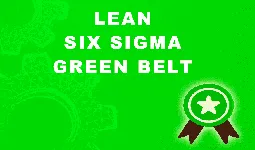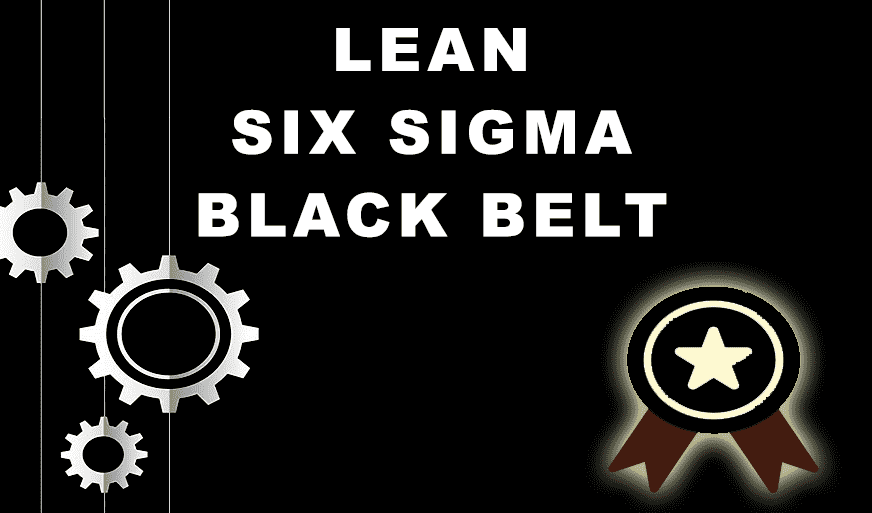Explaining QMS Documentation Structure: Benefits and Best Practices
-
 By Sushmith
By Sushmith - Published on Aug 28 2024

Table of Contents
An Overview of QMS Documentation
Documentation is the backbone, supporting the entire Quality Management System (QMS). A well-organized QMS documentation structure offers robustness in maintaining consistency in quality that ensures compliance with industry standards. In short, QMS documentation refers to the structured set of documents that outline the policies, processes, procedures, and records used within a Quality Management System.
A QMS document serves as a blueprint for how a product or service of an organization meets the required quality standards. And the key role of this is to provide a clear guide that aids in consistency across operations and facilitates compliance with regulatory standard requirements.
A properly designed QMS document supports the procedures of audits and acts as a reference for the team, guiding them to follow the same procedures and understanding their roles within the system. These documentations also make it easy to identify the areas for improvement within the system and also to make enhancements to the procedures to meet all regulations.
Key Components of QMS Documentation Structure
You now have a doubt, asking, “What makes a perfect QMS document?” To understand this, let's learn the key components of a QMS documentation structure.

Quality Manual
The Quality Manual is the key to making the best QMS documentation. This serves as the top-level document or a guide that provides an overview of the whole QMS process since it includes fundamental features like the organization's quality policy, objectives, and scope. Together with this, a properly structured quality manual also highlights the details on how the organization should meet its quality objectives.
Quality Policy and Objectives
The quality policy is a document within a quality manual that describes a formal statement outlining an organization's commitment to quality. This acts as a standard that is set by the organization reflecting its quality aspirations. And the quality objectives, on the other hand, are the specific goals that are derived from the quality policies. These help in the creation of documents and processes that see if all actions align with the set quality commitment.
Standard Operating Procedures (SOPs)
SOPs are the detailed instructions set by the management, on how to carry out any specific task within the QMS proves and the QMS implementation. They aid in maintaining consistency and standardization across all operations within the guidelines. SOPs are necessary for maintaining uniformity and reducing errors.
Work Instructions
Work Instructions, as the name suggest, is another form of documentation that details in depth than SOPs, in providing step-by-step guidance on specific activities or tasks. While SOPs cover broader processes, Work Instructions specifically focus on individual tasks within the process. They are particularly useful for complex tasks requiring precise execution.
Forms and Templates
Forms and Templates is the final kind of documentation that is required that aids in creating an effective QMS Documentation Structure. These are standardized and used to capture data, record results, and document the progress within the QMS. These make it easy to manage and analyze data. Use of these standardized forms and templates simplify the process of managing documents.
Creating and Maintaining QMS Documentation
There isn’t a lot to a QMS Documentation Structure. But to understand it in depth, let’s explore key the steps involved in creating and maintain QMS Documentations.
Best Practices for Document Control
For QMS documents to be accurate, current, and available to those who require them, effective document control is necessary. Establishing a centralized document management system, delegating document control tasks, and routinely reviewing and updating papers are examples of best practices. Effective document control guarantees compliance, reduces the chance of errors, and makes audits easier.
Document Version Control and Updates
One essential component of QMS document management is version control. It entails keeping a history of revisions, monitoring changes to documents, and making sure that only the most recent version is being used. Version control preserves the integrity of QMS documentation, guarantees consistency, and avoids misunderstandings. To reflect modifications to policies, procedures, or organizational structures, updates must be made on a regular basis.
Employee Training and Awareness on QMS Documentation
To ensure compliance and successful implementation, it is essential to train staff members on QMS documents. Workers must be aware of each document's purpose, application, and responsibility for upholding the QMS. Frequent training sessions and refresher courses guarantee that everyone follows the set procedures and serve to emphasize the significance of QMS documentation.
Benefits of a Well-Structured QMS Documentation System

Ensuring Consistency and Compliance
When a well-organized QMS documentation system is in place, all operations are guaranteed to be carried out consistently and in compliance with applicable regulations. Its uniformity helps to sustain the caliber of the good or service by reducing mistakes and the possibility of non-compliance in audits or inspections.
Facilitating Audits and Certifications
Well-organized QMS documentation makes the audit process easier by offering readable, understandable records of the QMS's upkeep and implementation. When pursuing ISO 9001 certification, this accessibility is especially crucial because inspectors will need proof that your QMS satisfies the relevant requirements. Your chances of being certified and keeping your certification up can be greatly increased by having well-maintained documentation.
Supporting Continuous Improvement
Because it provides a record of past performance, finds areas for improvement, and directs remedial measures, QMS documentation is critical to continuous improvement. Regularly reviewing and updating their documentation helps organizations maintain higher operational standards and achieve higher efficiency and quality goals.
Enhancing Operational Efficiency
A QMS documentation system that is well-organized removes confusion and provides clear instructions, which improves processes. Employees are able to finish tasks precisely and on time because to this clarity, which lowers errors and expedites turnaround times. By reducing misunderstanding and the need for rework, an organized QMS documentation system instantly increases operational efficiency.
Strengthening Customer Trust and Satisfaction
Clients are more inclined to believe in and support a company when they observe its constant dedication to quality. Proof that your business upholds strict quality standards can be found in the thorough documentation of its quality management system (QMS). Long-lasting connections can be cultivated and customer satisfaction increased by continually providing high-quality items or services backed by thorough documentation.
Conclusion
Any quality management system must have QMS documentation. It promotes continual improvement, facilitates compliance, and assures consistency. Upholding quality standards and earning certifications such as ISO 9001 require a well-organized documentation system. You can create a strong QMS that helps your business succeed by putting an emphasis on compliance, consistency, and clarity. This is the perfect opportunity to improve your documentation procedures and fortify your QMS.
In order to assist firms in mastering QMS documentation and obtaining ISO 9001 certification, Sprintzeal provides a range of training packages. From the fundamentals of QMS documentation to more complex subjects like document control and continuous improvement, our courses cover it all. Learn the ins and outs of Quality Management Systems and get the skills necessary to handle QMS documents efficiently.
To advance your quality management goals, consider enrolling into one of Sprintzeal's training courses. Explore Courses here…
Our newsletter is free! Subscribe, stay updated with the latest insights, and get early access to exclusive training discounts!
Subscribe to our Newsletters
Popular Programs
Trending Posts
Quality Control Explained – Six Sigma
Last updated on Feb 21 2024
5 Lean Continuous Improvement Principles to Supercharge Your Operations
Last updated on Jan 2 2024
Six Sigma Certification Guide - A Professional's Guide
Last updated on Sep 27 2024
Lean Continuous Improvement: A Detailed Guide to Mastering Organizational Quality
Last updated on Dec 12 2023
Lean Six Sigma on Resume for Rewarding Career Benefits
Last updated on Nov 20 2023
8 Wastes of Lean - Strategies for Identification and Elimination
Last updated on Dec 27 2023
Categories
- Agile Management 54
- AI and Machine Learning 42
- Big Data 53
- Business Management 51
- Cloud Computing 44
- Digital Marketing 56
- Information Security 8
- IT Hardware and Networking 17
- IT Security 103
- IT Service Management 29
- Leadership and Management 1
- Microsoft Program 2
- Other 43
- Programming Language 31
- Project Management 162
- Quality Management 75
- Risk Management 8
- Workplace Skill Building 2
Trending Now
Top Career benefits of Lean Six Sigma Green Belt
ArticleLean methodology, Six Sigma methodology and Lean Six Sigma Explained
ArticleSix Sigma Black Belt Certification – Value and Career Benefits in 2024
ArticlePareto Chart in Six Sigma - Explained
ArticleQuality Management Interview Questions 2024
ArticleSix Sigma Certification Guide - A Professional's Guide
ArticleSix Sigma Yellow Belt Certification - Six Sigma for Beginners
ArticleQuality Control Explained – Six Sigma
ArticleTotal Quality Management - A Complete Guide for Beginners
ArticleQuality Assurance in Six Sigma Explained
ArticleQuality Assurance vs Quality Control
ArticleSix Sigma Certification – Everything you Need to Know About Getting Certified
ArticleLean Six Sigma on Resume for Rewarding Career Benefits
ArticleQuality Manager Interview Questions and Answers for 2025
ebookService Delivery Manager Interview Questions and Answers (With Examples)
ArticleSix Sigma Interview Questions and Answers 2024
ArticleHow to become a Quality Analyst
ArticleA Supply Chain Management Guide to Mastering Logistics End to End
ArticleSenior Quality Manager Interview Questions and Answers 2024
ArticleTop 30 Quality Analyst Interview Questions and Answers 2025
ArticleFinancial Analyst Interview Questions and Answers 2024
ArticleRisk Manager Interview Questions and Answers 2024
ArticleCompliance Manager Interview Questions and Answers 2024
ArticleOperation Manager Interview Questions and Answers
Article5 Lean Continuous Improvement Principles to Supercharge Your Operations
ArticleHow to Become a Quality Manager - Career, Job Scope and Certifications
ArticleEssential Components of a Quality Management System
ArticleSix Sigma Certifications - Reasons Why you Should Get Them
ArticleTop Qualities of a Good Manager and a Leader
ArticleLearn about Statistical Process Control (SPC) and its top applications
ArticleCost of Poor Quality - A Detailed Guide
ArticleImplementing 5S Methodology for Better Work Efficiency
ArticleWhat Is Lean Management?
ArticleBest Six Sigma Books in 2024
ArticleLeadership vs Management - The Ultimate Guide
ArticleQuality Assurance Plan - Six Steps To Quality Assurance Plan
ArticleOperational Planning Creation, Key Elements and its Benefits
ArticleA Complete Guide to Product Life Cycle Stages 2025
ArticleSix Sigma tools for DMAIC Phases
ArticleWhat Is Lean Manufacturing?- An Overview
ArticleThe Lean Continuous Improvement Model: A Comprehensive Guide
ArticleDMAIC vs. DMADV: Key Differences and Choosing the Right Six Sigma Methodology
ArticleA Deep Dive into the Power of Lean Continuous Improvement Process
ArticleLean Continuous Improvement Methods for Business Excellence
ArticleIntroduction to Lean Manufacturing- Definitions, Framework, and More
ArticleUnderstanding the Key Principles of Lean Manufacturing
ArticleSecret to Unlock Organizational Excellence: Stages of Continuous Improvement
ArticleLean Continuous Improvement: A Detailed Guide to Mastering Organizational Quality
ArticleLean Waste Management: The Ultimate Guide 2023
ArticleA Deep Dive into Lean Continuous Improvement Tools
Article8 Wastes of Lean - Strategies for Identification and Elimination
ArticleThe Ultimate Guide to Lean Manufacturing
ArticleUnderstanding Lean Manufacturing's Pros and Cons
ArticleLean Waste Reduction Strategies: Boost Efficiency and Cut Costs
ArticleTop 10 Lean Manufacturing Tools for Optimal Productivity
ArticleBeyond the Basics: Benefits of Lean Continuous Improvement
ArticleWhat are Quality Standards? | A Guide to ISO Standards
Article7 Important Types of Quality Management System
ArticleA Comprehensive Guide to Quality Management Systems
ArticleISO 9001 Standard: Benefits and Certification
ArticleBenefits of QMS Certification for Your Business
ArticleStep-by-Step Implementation Guide to ISO 9001
ArticleThe Ultimate Guide to ISO 9001: Boosting Quality and Certification Success
ArticleQuality Management System – QSM Approaches and Methodologies
ArticleHow to Effectively Implement a Robust Quality Management System?
ArticleWho Needs ISO 9001 Certification and Why?
ArticleKey Elements of ISO 9001:2015 Quality Management System
ArticleOvercoming Common Challenges in ISO 9001 Certification: Tips and Best Practices
ArticleBest Quality Management Tools
ArticleTotal Quality Management (TQM) vs. Six Sigma
ArticleQuality Manager Salary: What Freshers & Experts Earn in 2025
ArticleCertified Scrum Product Owner: Job Roles And Responsibilities
ArticleTips for Continuous Integration Testing: Streamlining QA
Article10 Quality Management Strategies Adopted by Top Managers
Article

















